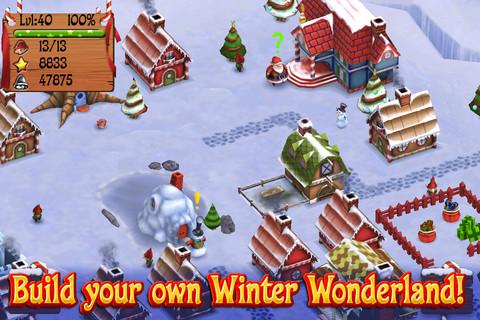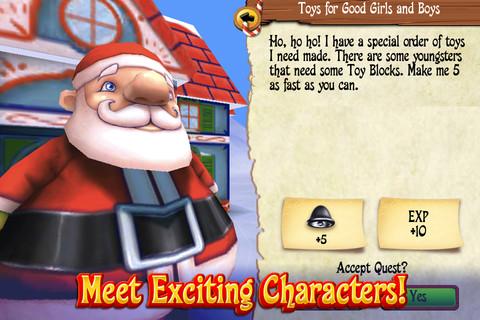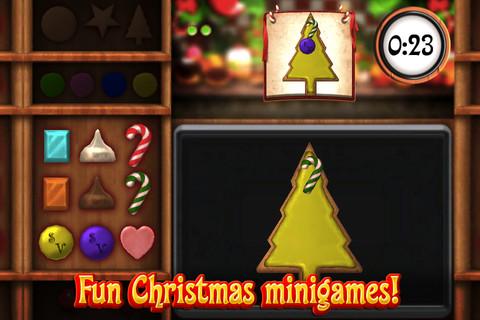- Wondering how to get Monopoly GO! free rolls? Well, you’ve come to the right place. In this guide, we provide you with a bunch of tips and tricks to get some free rolls for the hit new mobile game. We’ll …
Best Roblox Horror Games to Play Right Now – Updated Weekly
By Adele Wilson
Our Best Roblox Horror Games guide features the scariest and most creative experiences to play right now on the platform!The BEST Roblox Games of The Week – Games You Need To Play!
By Sho Roberts
Our feature shares our pick for the Best Roblox Games of the week! With our feature, we guarantee you'll find something new to play!Type Soul Clan Rarity Guide – All Legendary And Common Clans Listed!
By Nathan Ball
Wondering what your odds of rolling a particular Clan are? Wonder no more, with my handy Type Soul Clan Rarity guide.
Santa’s Village Review
It seems like odd timing, but Making Fun is getting a jump on the Christmas season with the release of Santa’s Village. A free-to-play business simulation type of game, it tasks players with building out a new North Pole village for Santa and his elves as they attempt to prepare a slew of toys for the winter holiday. The only problems are some nasty, purple Grumpkins that are seeking to ruin the fun.

Christmas Comes Early with Santa’s Village
It seems like odd timing, but Making Fun is getting a jump on the Christmas season with the release of Santa’s Village. A free-to-play business simulation type of game, it tasks players with building out a new North Pole village for Santa and his elves as they attempt to prepare a slew of toys for the winter holiday. The only problems are some nasty, purple Grumpkins that are seeking to ruin the fun.
Santa’s Village doesn’t have much of a story to it. The long and short of it is that Santa needs more room so that he can make more toys, thus the user comes into play. Gameplay is fairly standard as far as virtual space-oriented business sims go, and plays very similarly to Beeline Interactive’s Smurfs’ Village. As such, the game becomes the challenge of managing workers, income, and physical space.

Elves make up Santa’s workforce, and in order to earn more, players must construct homes for them to live in. For every task that the user engages in, at least one elf is required. This includes building any new structure or constructing toys. Like the majority of games of this nature, the construction time of both will vary based on the level and will take anywhere from 30 seconds, to several minutes, to hours.
Toys are the primary means of earning income in the game and are made from various toy shops that can be placed around the village. These work pretty much the same as any virtual farming game (e.g. FarmVille) where crops are grown. Unfortunately, Santa’s Village also employs one of the most obnoxious mechanics ever to come out of that particular genre: the expiration of said crops.
Early in the evolution of the these virtual space-style games, players would have to come back to their game when their “crops” were finished to harvest them. Should they not return quickly enough, they would spoil and become worthless. Toys, unfortunately, work the exact same way in Santa’s Village. For however long they take to create, players have that long to return until they are stolen by the Grumpkins (a sort of gremlin thing that hates Christmas). The only way to undo the damage is to spend the virtual currency of Stars to retrieve the stolen goods. As a side note, Stars are also used to expedite the construction of buildings and come as in-app purchases ranging from $4.99 to $24.99.

Like Smurfs’ Village, the player progresses through their levels by completing quests. These quests are given to the player by non-player characters that are available once their home is constructed. These are characters such as a talking snowman, a yeti, or even Santa himself. Quests are pretty simple and many of the early ones are instructional in nature, asking players to build specific buildings or decorations. After these are finished, the quests take on more regular roles such as “make X amount of Y toy” or are simple games such as finding objects around town.
One of the more original aspects to Santa’s Village is buildings that offer mini-games. Granted, the concept of mini-games for specific houses isn’t original, but the games themselves are. The first mini-game building players can create is the “Ice Castle” which unlocks a snowball fight with the Grumpkins. The game itself is interesting, as players tap their team of elves to dodge incoming snowballs and tap (an elf) and slide to throw. The snowball will move in the direction of the slide, and the first team to knock down all of the other team’s players wins.
Other games are simpler and consists of things like pattern recognition or catching falling objects. Regardless of game, they can only be played for a monetary and experience reward every so often (e.g. eight hours), but can always be accessed for “practice,” and played just for the sake of playing. Stars can be used here to remove the cool down before rewards are earnable again.

Another plus for Santa’s Village is that the game is of a high quality from a presentation standpoint. The game moves away from the typical 2D, cartoon element and is actually fully three-dimensional. Players can zoom in, zoom out, and rotate their camera 360 degrees. Also, as an iOS game, one might expect everything to look a bit ridged, but it’s actually of decent quality when zoomed in. Along with the Christmas music, it brings players a great overall experience.
In the end, Santa’s Village has some plusses, but its core play is something that has been done to death time and time again. It is nice to build a village in a new artistic style (made even better by the 3D), but the expiration of toys when players don’t return in time is a significant negative. If players are able to look past this, then they will likely enjoy the game, especially the quirky mini-games that it comes with. Santa’s Village, in short, makes for a decent game, even if not wholly original.

The good

The bad
More articles...
Monopoly GO! Free Rolls – Links For Free Dice
By Glen Fox
Wondering how to get Monopoly GO! free rolls? Well, you’ve come to the right place. In this guide, we provide you with a bunch of tips and tricks to get some free rolls for the hit new mobile game. We’ll …Best Roblox Horror Games to Play Right Now – Updated Weekly
By Adele Wilson
Our Best Roblox Horror Games guide features the scariest and most creative experiences to play right now on the platform!The BEST Roblox Games of The Week – Games You Need To Play!
By Sho Roberts
Our feature shares our pick for the Best Roblox Games of the week! With our feature, we guarantee you'll find something new to play!Type Soul Clan Rarity Guide – All Legendary And Common Clans Listed!
By Nathan Ball
Wondering what your odds of rolling a particular Clan are? Wonder no more, with my handy Type Soul Clan Rarity guide.







